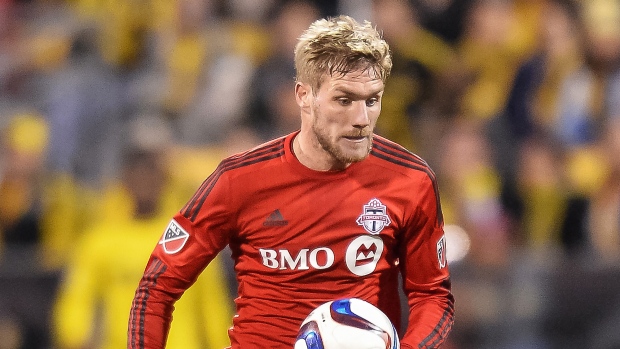Jul 8, 2015
MLS to revamp roster rules
Major League Soccer is revamping its roster rules to help clubs accommodate top talent that doesn't qualify as designated players. The league's new initiative, called targeted allocation money, provides clubs with US$500,000 outside this year's $3,490,000 salary budget to help sign and pay players who are near the top of the salary scale but who are not DPs.
The Canadian Press

TORONTO - Major League Soccer is revamping its roster rules to help clubs accommodate top talent that doesn't qualify as designated players.
The league's new initiative, called targeted allocation money, provides clubs with US$500,000 outside this year's $3,490,000 salary budget to help sign and pay players who are near the top of the salary scale but who are not DPs.
Under league rules, teams are allowed up to three designated players. For a designated player over the age of 23, only $436,250 of his salary actually counts against the salary cap.
"One area that we believed is of strategic importance for us if we want to drive quality and really push the league to the next level is to find a way to get more players that are in that salary range between $500,000 and between $1 million and $1.2 million," said Todd Durbin, the league's executive vice-president of competition and player relations.
"This will allow teams to bolster roster slots 4 through 11," he added.
The targeted allocation money is $100,000 a year over the next five years but teams can use all or part of the money as of now.
The new rule — which was part of the recently negotiated collective bargaining agreement — came into play Wednesday, matching the opening of the North American league's summer transfer/trade window.
The money can also be used to convert designated players into non-DPs, as long as the team that does so combines the move with signing a DP to replace him at the same or greater investment level.
As an example, take a DP who is making $700,000 this season. Only $436,250 counts against the league's salary budget, so the team's owner-operator has a remaining bill of $263,750.
With the rule kicking in now, the player would have already played half a season so the team would have to pay $131,875 in the second half of the year. The team could use the targeted allocation money to pay that, reducing his salary from DP status.
That is expected to happen in Los Angeles with the Galaxy using the new allocation money to buy down U.S. international defender Omar Gonzalez's DP salary to below the maximum salary budget charge.
That would then allow the Galaxy to sign Mexican star forward Giovani Dos Santos as a DP, joining Irish forward Robbie Keane and former England captain Steven Gerrard.
In essence, the targeted allocation money is just a new form of the league's existing allocation money program. But it can only be used in certain situations: on players who make more than the maximum salary budget charge, to convert DPs, or the money can be traded.
Targeted and general allocation money cannot be used on the same player in a single season.
While the targeted allocation money can be brought forward, there is a time limit to not using it. If a team, does not use its $100,000 allotment in 2015, it must use or trade at least that $100,000 in 2016.
Durbin said he believes clubs will take a different approach to the new rule.
"I think it's going to be a bit of a mixed bag. So I think some of the teams are going to avail themselves of the funds immediately. I think some teams are going to take a bit more time and continue to evaluate their roster as they always are. So I don't think it's going to be a one-size-fits-all solution."
For a team like Toronto FC, which has multimillion-dollar investments in DPs Sebastian Giovinco, Michael Bradley and Jozy Altidore, the money could be used to acquire a new high-level defender a la Damien Perquis.
MLS clubs routinely use general allocation money to pay down players' salaries to reduce their count against the cap.
Each club got $150,000 in allotment money this season, with more coming if they did not make the MLS Cup playoffs, had a player transfer to a non-MLS club or qualified for the CONCACAF Champions League. Teams who don't have a third designated player also get additional allocation money.
Allocation money can also be acquired by trade.
The 20-team league started the 2105 season with 47 designated players under contract.
___
Follow @NeilMDavidson on Twitter
